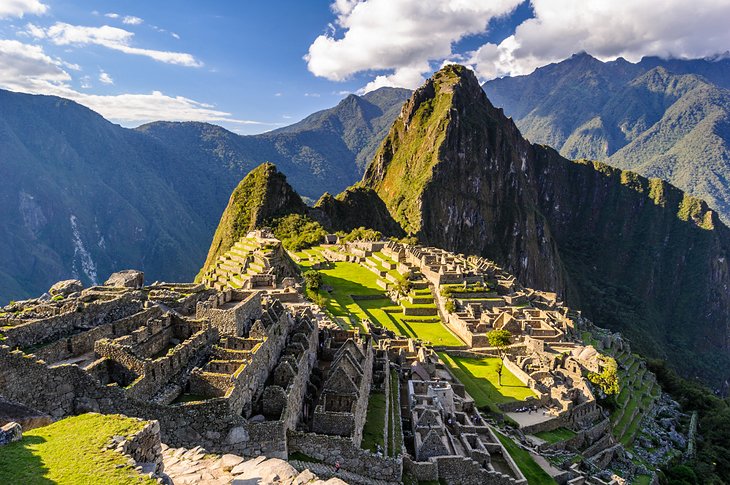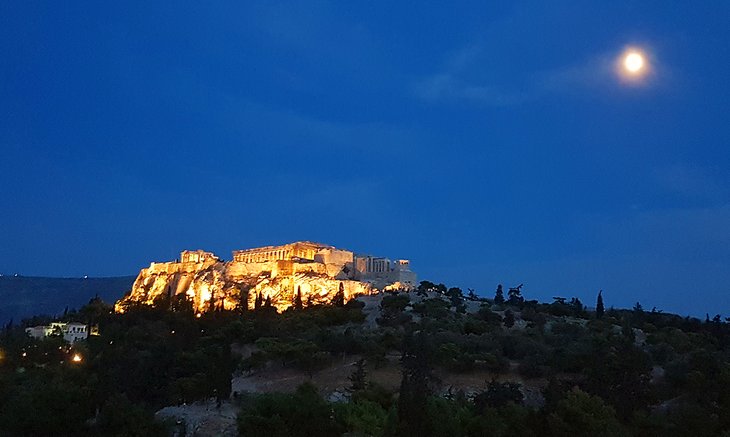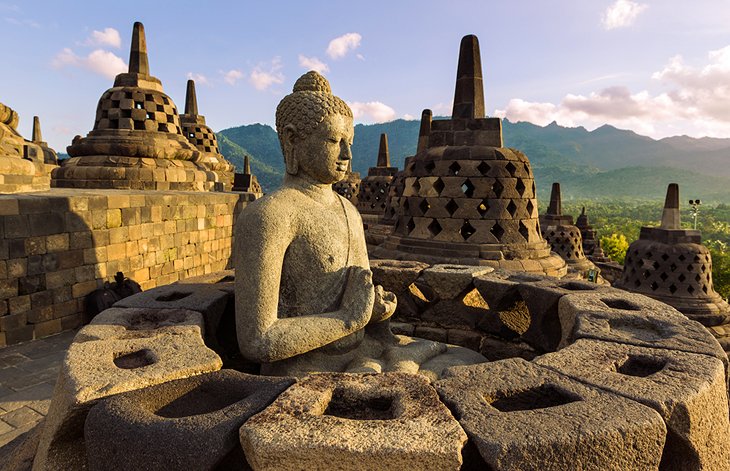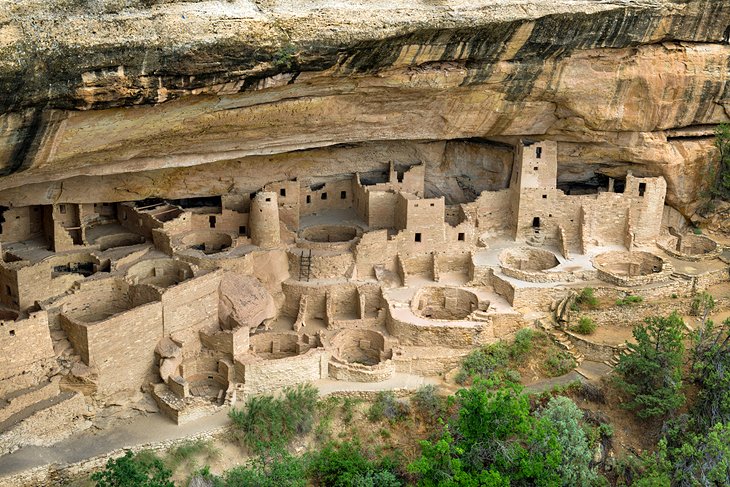Some of the most amazing historic sites were lost or concealed for ages or even millennia, buried beneath jungles, deserts, or farmland all over the planet. Unimaginable discoveries that are now on display for all to see were made as a result of rumours of lost cities or accidental discoveries made by people going about their daily lives. A large number of these are UNESCO World Heritage Sites.
Some of these amazing sites have been drawing visitors for hundreds of years, and they continue to fascinate people now just as they did when they were originally discovered. Although it may sound cliche, there has never been a better moment to visit the world's most famous places.
Machu Picchu, Peru

Machu Picchu is one of the most breathtaking locations of any archaeological site in the entire world, having been built in lush, hilly territory high above the Urubamba River. On each side of the mountain, the steep walls of this former Inca city cascade down, and terraced stairs lead to the valley below by disappearing over cliff faces. Visitors may get a fair idea of what the city could have looked like when it was inhabited during the 15th and 16th centuries thanks to the amazing remains' restoration and upkeep.
Pyramids of Giza, Egypt

The Pyramids of Giza, one of the most famous sights in the world, are a bizarre sight emerging from the desolate desert landscape just outside of Cairo. The Sphinx, which is almost as spectacular and stands guard nearby, stands looking aimlessly over the landscape.
The greatest of the pyramids, built between 2560 and 2540 BC, served as the Pharaohs' tombs. They were more than 2,600 years old when the Colosseum in Rome was being constructed, to give you an idea of how old they were. These enormous structures are the only remaining examples of the Seven Wonders of the Ancient World.
Bagan, Myanmar

At Bagan, the landscape is covered in tens of thousands of ancient temples and stupas. The silhouette of the spires against the sky in the early morning or late afternoon is a beautiful sight. The region is renowned for having the highest density of Buddhist temples anywhere in the world, many of which date back to the 1000s and 1100s, when the Pagan Kingdom's capital was located there.
Angkor Wat, Cambodia

Angkor Wat is the largest religious structure in the world and is located in a distinctive jungle environment not far from Siem Reap, but there is more to the Angkor complex than just its enormity. The Khmer people constructed the site in the 12th century, and the architecture is very spectacular.
A fascinating variety of excavated and unexcavated temples in all sizes, shapes, and decaying states can be found at the site, some of which have an otherworldly appearance due to being engulfed by trees and roots. Massive faces etched into stone stare out in all directions. The walls and entryway are covered in numerous, elaborate bas-reliefs. Exploration is beckoned by crumbling corridors and challenging stone staircases.
Great Wall of China

The Great Wall of China, which stretches about 6,000 kilometres and winds through mountains and woods, is one of those unquestionable must-see destinations that has long been the source of epic adventures. The oldest portions of this enormous wall, which connects battlements and watchtowers, date to the 7th century BC. It was constructed over several years.
The wall may now be seen on a day trip from Beijing, or you can take organised multi-day journeys to traverse entire portions of it. While some portions of the wall have been repaired, others are in desperate need of work.
Roman Colosseum, Italy

The Roman Colosseum, the largest building still standing from the Roman era, is one of the most well-known structures in the entire globe. Rome's great history and the accomplishments of the Roman Empire are attested to by its imposing presence in the heart of the city today.
Visitors who encounter it for the first time, whether turning a corner or emerging from the next subway stop, are awestruck by its enormous size. The building's construction started in AD 72, and it continues to be one of the most popular tourist destinations in the world.
Acropolis of Athens, Greece

Towering over the city of Athens from its hilltop perch, the Acropolis stands as a proud monument to Ancient Greece. Dating from between the 5th and 4th century BC and dominating the site, the Parthenon is the largest and most recognizable structure from this period and symbolizes the extensive history of this country.
Just steps away from modern day Athens, the Acropolis is a powerful sight, glistening in the Mediterranean sun during the day and lit for dramatic effect at night. For first-time visitors to the city, it is an awe inspiring sight and sets the stage for travelers carrying on to other parts of Greece.
Stonehenge, England

One of the most popular tourist destinations in the UK and undoubtedly one of the most unusual, this amazing prehistoric monument draws a sizable number of tourists each year. The monument is believed to have been built between 3000 and 1500 BC, but its origin and function are unknown, giving rise to a variety of myths and rumours, some of which suggest religious or astronomical importance.
As a result, the Bronze Age circle of standing stones inspires an almost ethereal allure, especially around the summer and winter solstices, when the sun's rays directly hit the stones. Stonehenge, which is close to Salisbury, is easily accessible as a day trip from London.
Borobudur, Indonesia

One of the most significant Buddhist sites in the world and perhaps one of Indonesia's most well-known sights is Borobudur. The location is both aesthetically magnificent and serenely serene, situated in a lush, tropical setting with mountains and volcanoes rising in the distance.
This enormous temple complex was built in the 700s on the island of Java, close to Yogyakarta. However, two to three centuries later, the site was abandoned, presumably as a result of nearby volcanic eruptions, and it remained undisturbed for centuries. The location was found by the British in the 1800s and afterwards renovated. It is currently one of Indonesia's top tourist destinations.
Mesa Verde, USA

One of the most visually magnificent archaeological sites in the USA and some of the best-preserved Indian ruins in North America may be found in Mesa Verde. The cliff homes perched precariously on canyon walls are the most striking sights, but the entire region, including the plateau covered in forest, is home to an enormous variety of ruins.
For hundreds of years, the Ancestral Puebloans lived in this region of what is now Colorado; they first resided on top of the plateau between the sixth and the twelfth centuries, and then until the late thirteenth century, they lived in cliff dwellings. You can see the sites on the plateau by car after ascending the site along a gently winding route to the top of the mesa.









